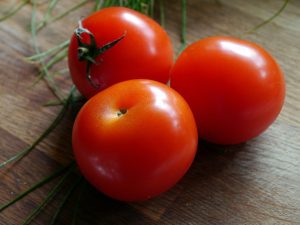Article: 1/5 of Americans responsible for 1/2 of the country’s food-based emissions
One-fifth of Americans are responsible for half the country’s food-based emissions
A recent article in Popular Science highlights the effect our food choices have on emissions and climate change.One way consumers can see how to make more climate-conscious choices mentioned in the article is the Better Buying Lab from the World Resources Institute – worth checking out!
We work hard to minimize our impact by limiting the use of gasoline powered equipment, shopping locally, and not using synthetic fertilizers and pesticides for example.

Do you know how your tomatoes are grown?
And figuring out how many tons of carbon dioxide get emitted from a single serving of tomatoes is no small task. That process, called life cycle analysis, involves understanding the agricultural processes required at every step of a tomato’s life before it leaves the farm. That includes how much fuel the tractor uses in the field, but also how much energy goes into making the fertilizer and pesticides. Fertilizer, Heller explains, is often one of the bigger contributors. It’s an energy-intensive process that requires making ammonia, and to make ammonia we often use natural gas, so the life cycle analysis for a tomato has to include the natural gas drilling required to make the fertilizer that went into the soil to grow the fruit. And then it also has to include the emissions created by that fertilized soil. Ammonia increases the amount of nitrogen in soil, and that excess nitrogen has the unfortunate side effect of promoting nitrous oxide production. Heller notes that nitrous oxide has 300 times the global warming potential of carbon dioxide, and it’s unavoidably created whenever you fertilize soil.
https://www.popsci.com/american-diet-food-emissions/
